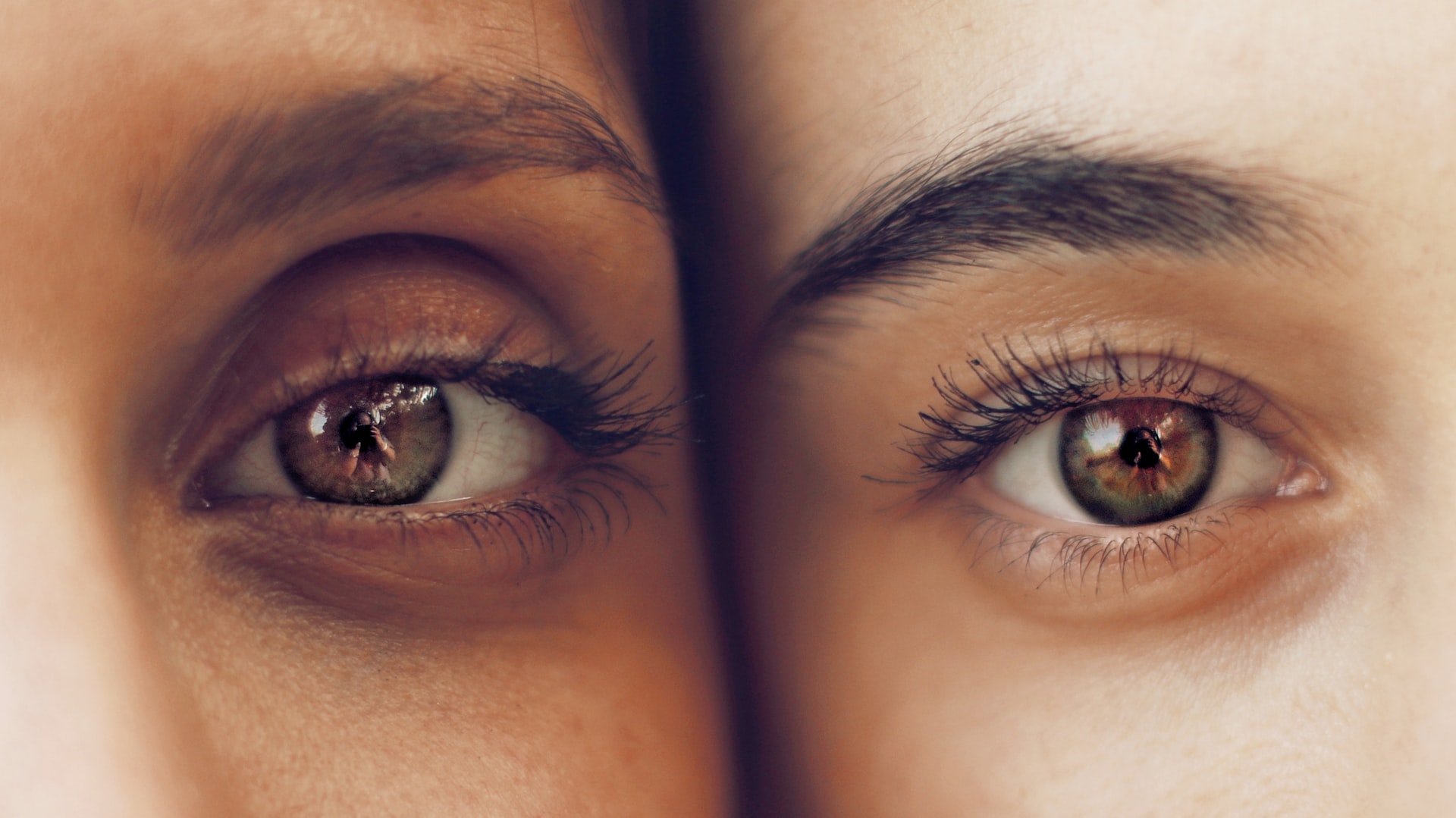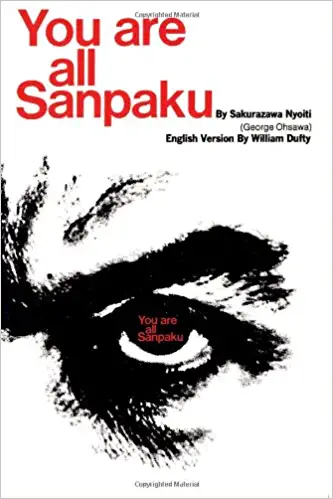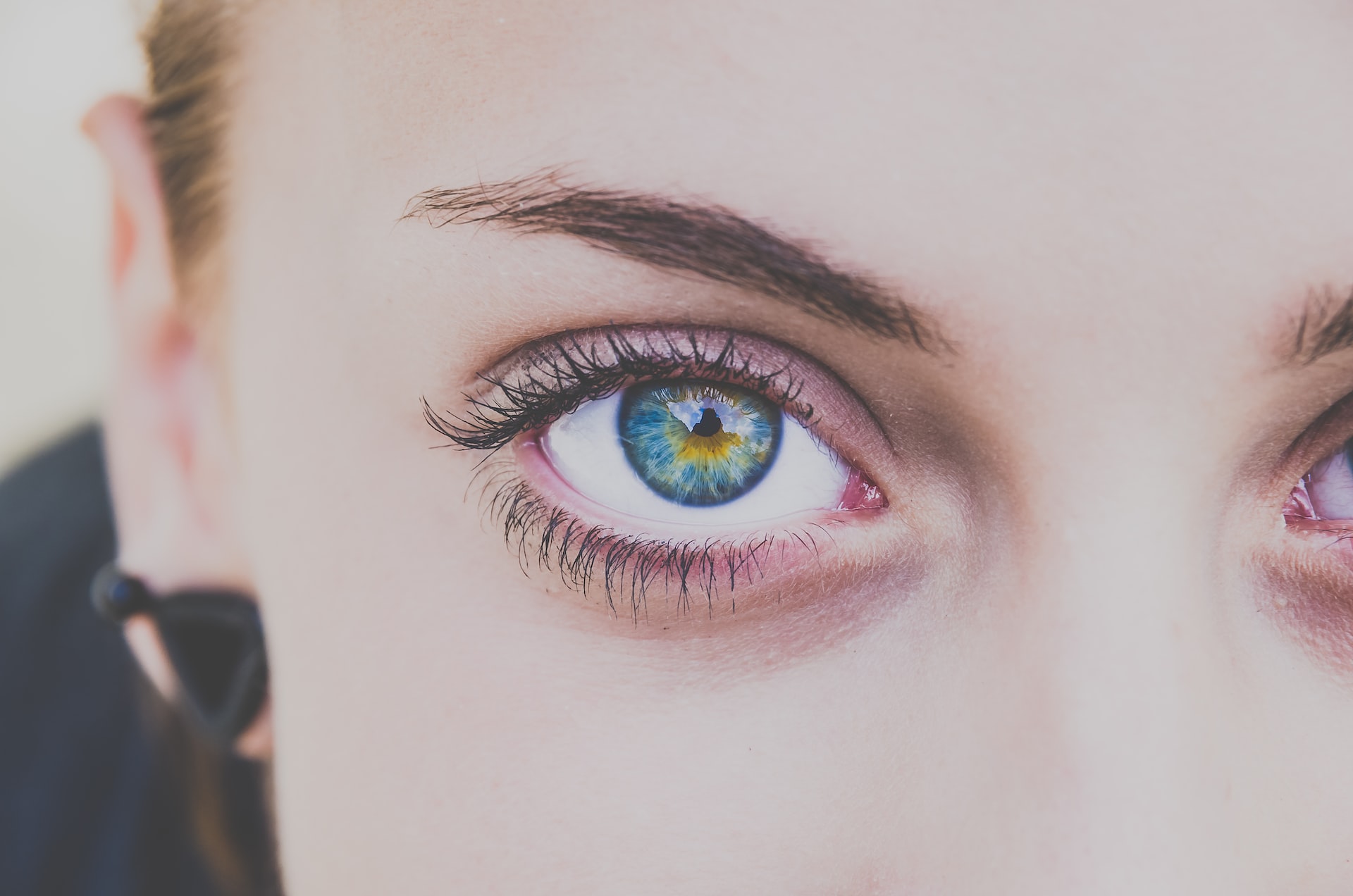Sanpaku Eyes - What Are These And The Superstition Behind Them?
Sanpaku, in Japanese, means "three whites," a reference to the color scheme of traditional Japanese Kimonos. With Sanpaku eyes, the white part of the eye, called the sclera, can be seen from all three sides instead of just two. The colorful component of the eye, the iris, is usually located in the center of the eye, protected by the upper and lower eyelids, with no scleral showing at the top or bottom.
Author:Suleman ShahReviewer:Han JuNov 13, 2022113 Shares112.6K Views

Sanpaku, in Japanese, means "three whites," a reference to the color scheme of traditional Japanese Kimonos. With Sanpaku eyes, the white part of the eye, called the sclera, can be seen from all three sides instead of just two.
The colorful component of the eye, the iris, is usually located in the center of the eye, protected by the upper and lower eyelids, with no scleral showing at the top or bottom.
When the sclera can be seen through the iris on both the left and right sides, however, it is seen as an indication of extreme neurological instability and a disruption in the normal rhythms between the brain, the body, and the soul.
According to the principles of Oriental medicine, the presence of Sanpaku eyes might be indicative of a variety of dysfunctions, both physiological and psychological.
What Is Sanpaku?
To break down an eye into its parts, the whites make up three of the four sections, thus the name "three whites" for sanpaku. When the white of someone's eye is seen above or below the iris, this condition is known as sanpaku.
That's not really noteworthy, and in most cases you wouldn't even notice it. However, Sanpaku is said to be a reliable predictor of the future in Japanese folklore.
In the 1960s, this belief exploded in the West because Japanese novelist George Osawa used the eyes of prominent Americans to prophesy their deaths (including Marilyn Monroe and John F. Kennedy).
Since then, Sanpaku's relationship to one's destiny has been the subject of much conjecture. If you subscribe to the myth, it depends on whether the whites of the eye are seen above or below.
Sanpaku Eyes Types
To simplify, sanpaku may be divided into two categories:
According to Japanese superstition, those who suffer from these diseases are more likely to be involved in violent acts.
Sanpaku Yang (Sanpaku Above)
Sanpaku eyes have the white of the eye, or sclera, protruding above the iris. Those unhinged and full of unrestrained anger, such as psychopaths, murderers, or serial killers, are said to exhibit yang sanpaku, a sign of mental instability.
Sanpaku Yin (Sanpaku Below)
We can see the white sclera of these sanpaku eyes under the iris. Substance abusers, alcoholics, and those who eat a lot of sugary foods and grains are said to have yin sanpaku, which represents a physical imbalance in the body.

What are Sanpaku eyes?
Theory Behind Sanpaku Eyes
The book "You Are All Sanpaku" was written by Ohsawa and released in 1965. However, it wasn't until the 1990s that the topic gained widespread attention.
In the West, George Ohsawa is most known for popularizing macrobiotics and the term Sanpaku. He said people with this disease would benefit from eating more healthy grains, veggies, and dried fruits.
The rules were established out of concern for the healthand safety of people with Sanpaku's eyes, who are thought to be more vulnerable to illness and deadly accidents.
As Brian Ashcraft described, Iris elevation and prominence of the lower eyelid are indicators of aging and illness. This suggests that the individual's mental or physical health is not optimal.
Causes Of Sanpaku Eyes
George Ohsawa, a Japanese thinker who spread the macrobiotics diet to the West and popularized the idea of yin-yang balance via eating a wide variety of complete foods, is primarily responsible for introducing the sanpaku concept to the West.
Ohsawa stole the idea of sanpaku from antiquated Asian diagnostic practices of interpreting facial traits. It was believed these features mirrored various states of one's bodily and spiritual well-being.
Ohsawa said that if you had three whites, you were "suspicious, afraid, insecure, easy to misunderstand, and passive," which he thought were all evil qualities.
Ohsawa was also prepared with examples, including John F. and Robert Kennedy, Hitler, Abraham Lincoln, and Marilyn Monroe, as famous personalities who exhibited sanpaku. This list of misfortunes, which now includes John Lennon and Elvis Presley, is the only reason why the character is well known.
Finally, Charles Manson had the feared "upper sanpaku," in which the white of the eye is visible above the iris, a condition regarded as indicative of a deadly psychopath. One can't argue that this group didn't have its share of public scandals, but it said it was open and didn't tell us anything about what they were.
Facial muscular tone decreases with age, causing the lower lid to droop and expose more white due to ectropion. Causes of exophthalmos, also known as proptosis, include Graves' illness, eye damage, and malignancy.
The so-called cooperative eye theory suggests that this is intentional. Many scientists believe that the appearance of human eyes evolved to facilitate communication.
Sanpaku Eyes Psychology
Your eyes can show how happy, sad, bored, or disgusted you are. You may stare at someone for a long time because of their attractiveness, yet you can quickly remove yourself from a threatening or unsettling situation. Pupils widen in response to emotions including fear, anger, and love (or lust).
The idea that the eyes are the window to the soul has been around for a long time, but now it has scientific support. This is either a long, menacing stare or a tense, awkward gaze. You may have the uneasy feeling that someone is watching you whenever you look up.
Some people believe that psychopathic people use intense eye contact as a manipulative tool to shock and intimidate their victims. Some have seen this as an attempt to maintain authority. Some people say they are bored. People who like to make other people feel bad may use intense staring to do this.
According to Japanese face reading, there are many different aspects of a person's face that might provide information about their character, skills, and lifeexperiences. One component of face reading is called "three whites," or sanpaku.
Whenever you gaze into a mirror, you will see the whites (sclera) of your eyes on either side of the colored part of your eye (the iris). If, however, there is white around the pupil as well, as well as the white of the iris itself, then your eyes are sanpaku.
Sanpaku Eyes Vs Typical Eyes
The pupil and iris are the colored parts of the eye, and the whites, or sclera, are what you see when you look at your own eyes in a mirror or reflection.
When you "roll" your eyes up and down or in a different direction, your iris and pupil move to accommodate the new visual angle. However, this is the typical appearance of the eyes.
Sanpaku eyes are those where the sclera is more readily seen. This may cause more of the whites of your eyes to show above or below your iris. The art of interpreting a person's emotions via their eyes is called "sanpaku eyes" in Japanese. One branch of physiognomy is face reading.
Character and personality traits are often attributed to a person's physical features, a process known as physiognomy. It is most often used for facial characteristics.
"Scleral show" is often used to describe Sanpaku eyes in Western medicine. Sanpaku eyes and scleral show refer to the same visual characteristic of the eye. However, depending on the context, they have entirely distinct connotations.
The scleral show can be caused by age, illness, injury, or a problem after blepharoplasty. Sanpaku eyes, on the other hand, are usually related to Japanese face reading or psychological meanings.
Sanpaku Eyes Benefits
The whites of the eyes become more apparent when the sclera is brought into sharp focus. The lack of creases in a Sanpaku eye gives the impression of age and distance. Because the eyelids seem to meet at the bridge of the nose, people with sanpaku eyes are sometimes misdiagnosed as having squints. This provides a unique appearance with the following advantages:
Surprised Look
Because the expression created by sanpaku eyes is comparable to that of surprise, those who have them, even when they are not astonished, seem to have that expression. Also, the look of sanpaku eyes has long been linked to a dishonest personality.
Aesthetic Value
Sanpaku eyes can provide an aesthetic benefit by helping to differentiate a person's face. However, in many cases, because Sanpaku eyes form from some form of bone-structure weakness, the eyes are paired with a host of other undesirable characteristics, such as a "bug-eyed" look. This is because Sanpaku eyes form from a weaker bone structure.
Superstition Behind Sanpaku Eyes
Superstitions like "Sanpaku eyes" are only one example of beliefs that aren't backed up by evidence; many individuals experience both good and terrible fortune every day regardless of the physical characteristics of their eyes.
A decent diet helps us live a healthy life, but it can't protect us from everything that may go wrong. The macrobiotic who recommended the diet said it would make its adherents less likely to be injured in accidents.
Even in its country of origin, Japan, this superstition is not taken seriously. In Japan, somebody with this quality is regarded as "very Kawaii" or exceedingly adorable.
Whether you want to check if you have Sanpaku eyes or not, you need to look dead ahead and observe if the iris meets the eye.
Stop crediting these ridiculous beliefs about having Sanpaku eyes and instead celebrate them as a unique and lovely part of your identity.
Celebrities With Sanpaku Eyes
It's possible that the recent interest in the sanpaku eyes idea has refocused the public's attention on the eyes of their favorite celebrities. The following famous personalities had sanpaku eyes.
- Charles Manson:The notorious serial killer, Charles Manson, sported yang sanpaku eyes.
- John F. Kennedy:The eyes of the 35th President of the United States, John F. Kennedy, were yin sanpaku. His eye appearance may be affected by Addison's disease and hypothyroidism, both of which he reportedly suffers from.
- Marilyn Monroe:There was a yin sanpaku quality to Marilyn Monroe's eyes. She had to fight mental illness all her life.
- Billie Eilish:Eye color, in Billie Eilish's case, is yin sanpaku. She hasn't been afraid to talk about having depression and other mental healthproblems.
Even if you don't get into the sanpaku eyes idea, it's worth noting that many famous people have had, or now have, issues with their mental health if they have sanpaku eyes. Is it possible that sanpaku eyes are a sign of mental illness?
Top Ebooks You Would Like To Read About Sanpaku

This book introduced two new words into our vocabulary. The first, a well-known Japanese term, sanpaku, describes a condition in which the white of the eye can be seen between the pupil and the lower lid as the subject gazes directly forward. This, we quickly learn, connotes a grave state of physical and spiritual imbalance. The sanpaku is out of touch with himself, his body and the natural forces of the universe. Symptomatically, sanpaku can be recognized by chronic fatigue, low sexual vitality, poor instinctive reactions, bad humor, inability to sleep soundly and lack of precision in thought and action. Macrobiotics, our second term (and one which quickly became part of the English language) is the simple, natural means of correcting the dangerous sanpaku condition and creating a state of health, harmony and well-being, within and without.
10/10
rating

If Amane was shy towards her classmates, imagine her in front of the entire student body as she stars in a live performance of the classic Japanese fairy tale - Momotaro! A special event like this requires special practice sessions. Karaoke and arcades are in store! She is going to have to perform (have fun) even if it kills her.
10/10
rating

After a stressful first date, Amane has a lot on her mind... She and Kato are now a couple! And that means dates and new special memories...and a lot of doubt and anxiety. Still, her first love makes all of the uncertainty more than worthwhile!
9/10
rating
People Also Ask
How Do You Fix Sanpaku Eye?
A midface lift and a lateral canthopexy with spacer grafting are probably necessary for you. All these procedures are done simultaneously through a lower blepharoplasty incision so that the lower lid can be lifted, stabilized, and reshaped into a more almond-shaped position.
What Does It Mean If You Have White Under Your Eyes?
Eye inflammationor infection may cause a white, watery discharge from one or both of your eyes. In other circumstances, the accumulation of oil and mucus as you sleep may account for the discharge during sleep.
Are Sanpaku Eyes Good?
When the white of someone's eye is seen above or below the iris, this condition is known as sanpaku. That's not really noteworthy, and in most cases you wouldn't even notice it. However, Sanpaku is said to be a reliable predictor of the future in Japanese folklore.
What Does Having Sanpaku Eyes Mean?
One component of face reading is called "three whites," or sanpaku for short. You can see the whites (sclera) of your own eyes if you gaze into a mirror; they are visible on both the inside and outside of each eye. But if there's white around the pupil as well, it makes your eyes sanpaku, or "three whites."
Conclusion
The scleral show can be caused by age, illness, injury, or a problem after blepharoplasty. Sanpaku eyes, on the other hand, are usually related to Japanese face reading or psychological meanings.
Scleral occlusion, often known as Sanpaku eyes, is not a medical disease that indicates underlying difficulties or requires repair. However, you may want corrective medical intervention if your sclera is showing because of issues from blepharoplasty, trauma, or just the natural aging process.
Talk to an ophthalmologist for an assessment if you're considering "correcting" your Sanpaku eyes (scleral show) using medical procedures.

Suleman Shah
Author
Suleman Shah is a researcher and freelance writer. As a researcher, he has worked with MNS University of Agriculture, Multan (Pakistan) and Texas A & M University (USA). He regularly writes science articles and blogs for science news website immersse.com and open access publishers OA Publishing London and Scientific Times. He loves to keep himself updated on scientific developments and convert these developments into everyday language to update the readers about the developments in the scientific era. His primary research focus is Plant sciences, and he contributed to this field by publishing his research in scientific journals and presenting his work at many Conferences.
Shah graduated from the University of Agriculture Faisalabad (Pakistan) and started his professional carrier with Jaffer Agro Services and later with the Agriculture Department of the Government of Pakistan. His research interest compelled and attracted him to proceed with his carrier in Plant sciences research. So, he started his Ph.D. in Soil Science at MNS University of Agriculture Multan (Pakistan). Later, he started working as a visiting scholar with Texas A&M University (USA).
Shah’s experience with big Open Excess publishers like Springers, Frontiers, MDPI, etc., testified to his belief in Open Access as a barrier-removing mechanism between researchers and the readers of their research. Shah believes that Open Access is revolutionizing the publication process and benefitting research in all fields.

Han Ju
Reviewer
Hello! I'm Han Ju, the heart behind World Wide Journals. My life is a unique tapestry woven from the threads of news, spirituality, and science, enriched by melodies from my guitar. Raised amidst tales of the ancient and the arcane, I developed a keen eye for the stories that truly matter. Through my work, I seek to bridge the seen with the unseen, marrying the rigor of science with the depth of spirituality.
Each article at World Wide Journals is a piece of this ongoing quest, blending analysis with personal reflection. Whether exploring quantum frontiers or strumming chords under the stars, my aim is to inspire and provoke thought, inviting you into a world where every discovery is a note in the grand symphony of existence.
Welcome aboard this journey of insight and exploration, where curiosity leads and music guides.
Latest Articles
Popular Articles



